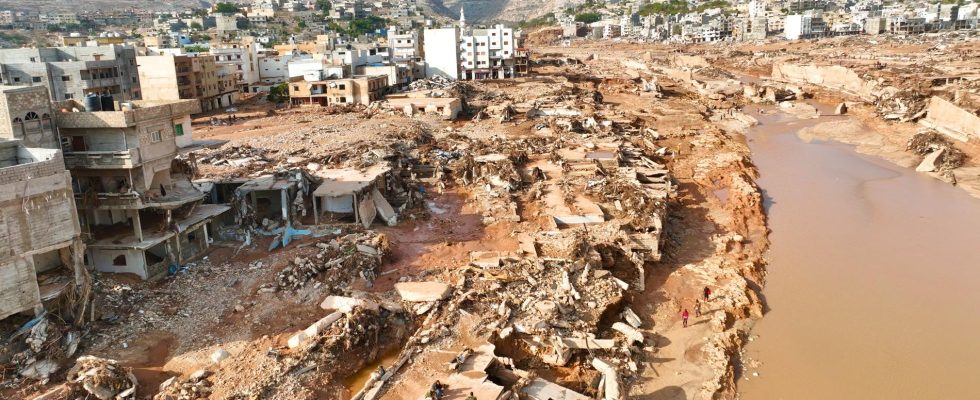full screen
Next
Many thousands of people have died in the city of Darnah in Libya since storm Daniel and the devastating downpours moved in. The picture is from September 12.
1 / 2Photo: Jamal Alkomaty/AP/TT
A rare but devastating Mediterranean storm led to disaster in Libya. Feverish seas can make extreme storms more intense, experts say.
Families have been wiped out as entire neighborhoods have been washed away. Now only mass graves remain, along with the survivors who are still trying to grasp what it was that happened when the masses of water suddenly rushed in like huge tidal waves.
Thousands of people have died since Storm Daniel’s extreme downpours led to devastating floods in Libya. Over parts of the country’s north-east coast, 400 millimeters of rain fell in one day – catastrophic amounts in an area that usually receives around 1.5 millimeters throughout September.
Greece, Turkey and Bulgaria have also been affected by the storm’s relentless progress.
Intense phenomenon
Daniel developed into a so-called “medicane”, a storm that in some respects resembles a tropical hurricane – but which arises in the Mediterranean, often near the North African coast.
– It is a fairly intense phenomenon that often brings heavy rainfall, but not as high wind speeds as tropical cyclones. The phenomenon only occurs once a year, says Anna Rutgersson, professor of meteorology at Uppsala University, to TT.
There is currently no clear connection to climate change and the occurrence of Mediterranean cyclones of the Daniel type. But the Mediterranean area may have to prepare for increasingly powerful and intense storms of this kind in the future, according to the UN’s climate panel IPCC.
“We are convinced that climate change ‘supercharges’ the rainfall associated with such storms,” writes Liz Stephens, professor of climate risk at the University of Reading, in a comment.
“More extreme”
– In general, when it comes to extreme weather events, there is a risk that this type of precipitation will become more extreme. A warm ocean provides more evaporation and potentially more energy and power to systems like this, says Anna Rutgersson.
In July, the highest average temperature ever recorded for the surface water of the Mediterranean Sea, which has been several degrees warmer than normal during the summer. And even if phenomena such as storm Daniel would have occurred even without climate change, the effects may have worsened in the wake of global warming.
– But it’s not as simple as it getting warmer and then it gets worse, but several processes are connected. If, for example, there is a strong change in the wind speed at altitude, these systems break up and are not as strong, says Rutgersson.
Fueling storms
But more flooding could lie ahead as the planet warms and extreme rainfall becomes more frequent and intense, according to Stefan Uhlenbrook, director of hydrology and cryosphere at the World Meteorological Organization (WMO).
– More than 80 percent of the moisture in the clouds comes from the oceans, and even more in the case of tropical cyclones. This means that increasingly warmer seas will further fuel storms, he says in a comment.
– It can lead to more floods.
FACT Storm Daniel
Storm Daniel developed in Greece and was named by the country’s national weather service. As the storm moved toward Libya, the storm developed characteristics to become a “medicane” (a portmanteau of the words MEDIterranean hurriCANE).
A “medicane” is a hybrid phenomenon that exhibits some characteristics found in tropical cyclones but also other characteristics found in midlatitude cyclones.
The phenomenon is quite rare and usually occurs one to three times a year between September and January.
In addition to the devastation in Libya, Daniel brought record rainfall in Greece on September 5-6. At a station in the village of Zagora, 750 millimeters were reported in one day, an amount that normally falls over 18 months. In Thessaly in central Greece, many stations measured 400 to 600 millimeters of rain in 24 hours.
Source: WMO
Read more
